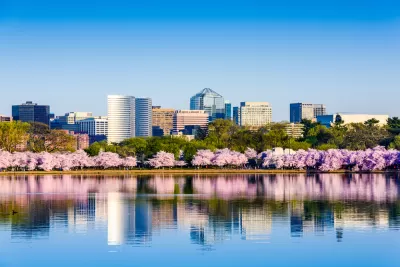Close to 60,000 District households can’t afford their housing costs, according to research from the Urban Institute.

An analysis from the Urban Institute by Elizabeth Burton, Leah Hendey, and Peter A. Tatian highlights renter assistance programs in Washington, D.C., which remain inadequate for stemming the rising number of evictions. “The number of evictions executed in 2024 is on pace to reach prepandemic levels, and an estimated 14 percent of DC renter households reported that they are not caught up on their rent payments.”
The analysis delves into various housing assistance programs and estimates “how many more eligible households in DC could be served by deep subsidies, shallow subsidies, and rental assistance that serve households with incomes below 50 percent of the area median income (AMI).”
The report concludes that “DC needs significant funding increases for housing assistance programs to prevent increased housing instability, evictions, homelessness, and displacement.” The authors call for a boost in assistance programs that they acknowledge require “an immense increase in funding and the political will to reform the housing system.”
Aside from the impact of assistance programs on helping residents stay in their homes and reduce housing costs, the authors write, “the cost of failing to address housing instability has other short- and long-term funding impacts, including direct eviction costs and funding for mental and physical health, schools, and homelessness services.”
FULL STORY: Combating Rising Evictions in the District of Columbia with Housing Subsidies

Study: Maui’s Plan to Convert Vacation Rentals to Long-Term Housing Could Cause Nearly $1 Billion Economic Loss
The plan would reduce visitor accommodation by 25,% resulting in 1,900 jobs lost.

North Texas Transit Leaders Tout Benefits of TOD for Growing Region
At a summit focused on transit-oriented development, policymakers discussed how North Texas’ expanded light rail system can serve as a tool for economic growth.

Why Should We Subsidize Public Transportation?
Many public transit agencies face financial stress due to rising costs, declining fare revenue, and declining subsidies. Transit advocates must provide a strong business case for increasing public transit funding.

How to Make US Trains Faster
Changes to boarding platforms and a switch to electric trains could improve U.S. passenger rail service without the added cost of high-speed rail.

Columbia’s Revitalized ‘Loop’ Is a Hub for Local Entrepreneurs
A focus on small businesses is helping a commercial corridor in Columbia, Missouri thrive.

Invasive Insect Threatens Minnesota’s Ash Forests
The Emerald Ash Borer is a rapidly spreading invasive pest threatening Minnesota’s ash trees, and homeowners are encouraged to plant diverse replacement species, avoid moving ash firewood, and monitor for signs of infestation.
Urban Design for Planners 1: Software Tools
This six-course series explores essential urban design concepts using open source software and equips planners with the tools they need to participate fully in the urban design process.
Planning for Universal Design
Learn the tools for implementing Universal Design in planning regulations.
City of Santa Clarita
Ascent Environmental
Institute for Housing and Urban Development Studies (IHS)
City of Grandview
Harvard GSD Executive Education
Toledo-Lucas County Plan Commissions
Salt Lake City
NYU Wagner Graduate School of Public Service





























